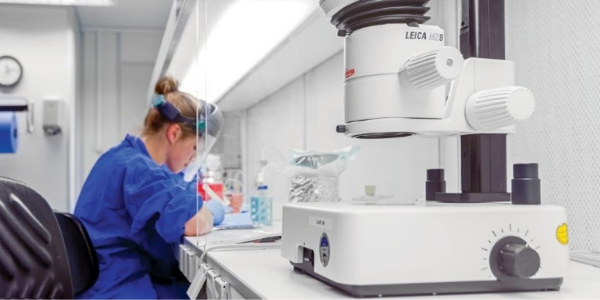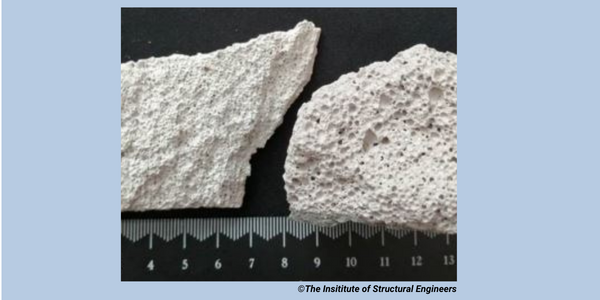HSE Guidance Update – HS(G)248 Asbestos: The Analysts’ Guide - changes and implications for the housing sector
This revised guidance from the Health and Safety Executive (HSE), designed to improve asbestos analytical standards, has been eagerly anticipated by suppliers and duty holders alike. Changes in the guidance will present new challenges for all concerned in the course of managing asbestos risk within the housing sector.

Most compliance managers and duty holders will be aware of HS(G)264 Asbestos: The Survey Guide that encompasses the requirements to conduct asbestos surveys, but many will not have heard of HS(G)248 Asbestos: The Analysts’ Guide. However, it influences a range of asbestos compliance activities, from taking samples during surveys and the subsequent laboratory analysis, the need for impartiality between suppliers and to air monitoring during asbestos abatement activities. The following provides a summary of the key changes.
Taking samples during a survey
The revised guidance places an emphasis on the sampling of textured coating which will significantly affect the housing sector due to its prolific extent in UK housing stock. Surveying companies will now be required to take two samples per surface reflecting the need for greater robustness in identification.
As a consequence, all forms of asbestos surveys and bulk sampling activities will take longer and potentially cost more. Further consideration will be required for the repair of these sample locations, particularly within domestic units.
There is a new requirement to sample stone, including dolomite, basalt, soapstone, talc, marble and vermiculite, due to historic identification of trace amounts of asbestos. The challenge will be to identify this type of fabric within stock and to work with the asbestos surveying company to minimise damage during sampling activities.
The guidance formerly broaches the subject of dust and wipe samples which has been generally frowned upon for various reasons. The HSE does not recommend this form of sampling technique and they should therefore only be used in very specific scenarios such as quantifying the extent of asbestos contamination.
Analysing the samples after a survey
There is now a greater emphasis on UKAS accredited laboratories to raise standards in asbestos sample analysis taken during surveys. This has already presented significant challenges for suppliers since publication of the revised guidance in July 2021 and laboratories transition to the new guidance in February 2022.
Historically, laboratories have been required to check the results of analysis as part of their quality management system, but the revised guidance goes further and necessitates more checks to improve accuracy. This in itself, may increase the number of positive samples.
Furthermore, the guidance requires analysts to “acquire an additional point” for counting negative samples. The points-based system controls the numbers of samples an analyst can complete in a working day and this additional point should result in more accurate analysis but will also reduce the number of samples they can complete.
So on one hand, duty holders should expect to have more accurate analysis of asbestos samples, but ‘the rub’ is that there will be delays in survey and sampling reports and additional costs should be expected.
Impartiality between suppliers
The HSE has always advised that licensed asbestos removal contracts (LARCs) are procured separately from the asbestos analysts that provide air monitoring during asbestos abatement projects, and the revised guidance further reinforces this advice.
The benefit of this approach is to raise standards in the “four stage clearance” conducted by the asbestos analysts to facilitate safe reoccupation of the area at the end of the asbestos removal process. Employing the two independent organisations by the client should reduce the chances of collusion between the companies and lessen the pressure placed upon analysts and contractors.
The HSE strongly recommends the separation of the two suppliers and provides some definition as to the possible links between the two which should be checked:
- Shared ownership of the suppliers
- Holding companies
- Common management structures
- Suppliers that perform a high % of work for one another
The caveat within the guidance is that where there are links between suppliers and this is unavoidable, there is a specific requirement on the analytical company to declare this to duty holders in writing. Best for the client to prompt and record.
Air monitoring on site during asbestos abatement
The revised guidance places greater responsibilities on asbestos analytical companies to audit the work done by their analysts when conducing air monitoring and four stage clearances on site. This is again designed to improve standards. The expectations include:
- 5% of all four stage clearances are checked “blind” following the visual inspection but before the building is handed back to the duty holder
- 5% of all completed four stage clearance paperwork, and
- Every site based analyst to be audited 4 times a year (with a reasonable interval between each)
Duty holders should expect to see more auditors on site and the auditors asking to return to completed projects to audit the work completed by the analysts. It also presents an opportunity to employ third party auditors to independently assure work done by all suppliers.
Conclusions
In summary, compliance managers and duty holders should have an appreciation of HSG248 as it is likely to impact your asbestos management process with possible delays and additional costs. It should however improve standards and the quality of information provided to manage asbestos risks more effectively. If your asbestos surveyors and/or analyst have not raised these changes with you, it maybe prudent to ask them why not?
John Evison is a Director at iON Consultants



